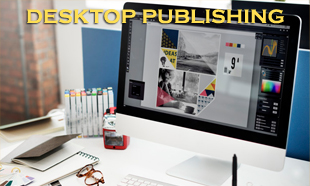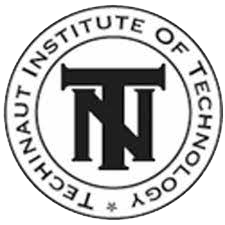0
DESKTOP PUBLISHING" course at BOSCOTECH, Tarapur-Khelma, Assam, provides comprehensive training in layout design, typography, and graphic editing at the esteemed Techinaut Institute of Technology.
Desktop publishing (DTP) has transformed the way we create and publish documents, enabling us to produce professional-quality layouts and designs from our computers. Boscotech, a franchise of Techinaut Institute of Technology based in Tarapur-Khelma, Cachar, Assam, offers a unique and comprehensive 6-month DTP course. This course stands out by equipping students with the skills to create stunning publications using industry-standard software tools, including brochures, flyers, newsletters, and more.
THE OBJECTIVE OF THE COURSE:
The primary objective of the Desktop Publishing course offered by Boscotech is to enable students to develop proficiency in a wide range of DTP software tools. This comprehensive 6-month course is designed to ensure that students are familiar with these tools and can use them to create visually appealing and professionally designed documents.
- Gain a solid understanding of computer fundamentals and operating systems, including DOS and MS Windows.
- Learn about the printing process and DTP fundamentals, including layout design, typography, and colour theory.
- Master using popular DTP software applications such as Adobe InDesign, PageMaker, QuarkXPress, CorelDRAW, Illustrator, and Photoshop.
- Develop practical skills in creating various publications, such as brochures, flyers, posters, business cards, and magazines. These skills were directly applicable in real-world scenarios, preparing students for a career in graphic design, layout art, and DTP specialists.
- Explore advanced techniques for image editing, illustration, and graphic design to enhance the visuals of their publications.
SECTION 1: COMPUTER FUNDAMENTALS
The course begins with an introduction to computer fundamentals, covering topics such as hardware components, software applications, file management, and basic troubleshooting techniques. Students learn about the anatomy of a computer system, including the CPU, memory, storage devices, input and output devices, and peripheral devices.
SECTION 2: OPERATING SYSTEM: DOS AND MS WINDOWS
In this section, students delve deeper into operating systems, focusing on DOS (Disk Operating System) and MS Windows. They learn about the history and evolution of DOS, its command-line interface, and basic commands for file management and system configuration.
Students also gain hands-on experience with MS Windows, learning to navigate the graphical user interface, manage files and folders, customize system settings, and install and uninstall software applications.
SECTION 3: PRINTING PROCESS
In this section, students learn about printing and its importance in desktop publishing. They gain insights into different printing methods, terminology, and industry standards.
Students also explore the factors that affect print quality, such as resolution, colour mode, and file format, and learn how to prepare documents for printing using DTP software applications.
SECTION 4: DTP FUNDAMENTALS
Students learn desktop publishing fundamentals in this section, including layout design, typography, and colour theory. They explore principles of visual hierarchy, alignment, balance, and contrast, as well as techniques for selecting and pairing fonts effectively.
Students also learn about the importance of colour in design, including colour theory, colour psychology, and the use of colour schemes and palettes to convey mood and emotion in publications.
SECTION 5: USING MS WORD
In this section, students learn to use Microsoft Word for basic desktop publishing tasks. They explore features such as text formatting, paragraph styles, page layout, and inserting images and graphics into documents.
While MS Word is primarily a word processing software, it offers basic DTP functionality that allows students to create simple publications such as newsletters, flyers, and brochures.
SECTION 6: ADOBE PAGEMAKER
In this section, students delve into Adobe PageMaker, one of the pioneering DTP software applications. They learn about the interface and tools available in PageMaker for creating layouts, importing text and graphics, and formatting documents.
Students explore features such as master pages, stylesheets, and templates to streamline the layout design process and maintain consistency across multiple pages.
SECTION 7: QuarkXPress
In this section, students learn to use QuarkXPress, another popular DTP software application widely used in the publishing industry. They become familiar with the interface and tools available in QuarkXPress for creating complex layouts, working with text and images, and managing multiple projects simultaneously.
Students explore advanced features such as layers, grids, and guides to achieve precise layout designs and maximize productivity.
SECTION 8: USING CORELDRAW
In this section, students explore CorelDRAW, a powerful vector graphics editor commonly used for illustration and graphic design. They learn about the interface and tools available in CorelDRAW for creating vector artwork, editing shapes and paths, and applying effects and transformations.
Students also learn about advanced features such as colour management, typography tools, and print and web publishing output options.
SECTION 9: ADOBE ILLUSTRATOR CS
In this section, students delve into Adobe Illustrator CS, another industry-standard vector graphics editor known for its precision and versatility. They learn about the interface and tools available in Illustrator for creating vector artwork, including drawing tools, brushes, and gradients.
Students explore techniques for working with text, symbols, patterns, and advanced features such as pathfinder operations, image tracing, and 3D effects.
SECTION 10: ADOBE PHOTOSHOP CS
In this section, students learn to use Adobe Photoshop CS, a powerful raster graphics editor commonly used for image editing and manipulation. They become familiar with the interface and tools available in Photoshop for retouching photos, compositing images, and applying filters and effects.
Students explore techniques for working with layers, masks, and adjustment layers to achieve professional-quality results in their publications.
CONCLUSION
The 6-month Desktop Publishing course offered by Boscotech is not just about theory but also about practical application. It provides students with the skills and knowledge necessary to create visually appealing and professionally designed publications. By covering computer fundamentals, operating systems, printing processes, and popular DTP software applications, the course equips students with the tools and techniques needed to succeed in the publishing industry.
Graduates of this course are not limited to a single career path. They are prepared to pursue careers as graphic designers, layout artists, and DTP specialists, working in publishing houses, advertising agencies, printing companies, and other creative industries. Whether creating brochures, flyers, posters, or magazines, students develop the creativity, technical proficiency, and attention to detail required to produce stunning publications that captivate audiences and convey messages effectively.


